Hitting the pause button on your savings can free up lots of savings opportunities for your finances.
Boost that savings account with this “cold-turkey” advice — it can help you break some spending habits that may have gone awry.
How do you feel about your savings goals right now? Are you making steady progress toward what you want to accomplish — or did you get a little sidetracked recently and spend your cash instead of saving it? Don’t beat yourself up about it. Whether you’re saving for short-term goals like a summer vacation or a long-term goal like a new car, getting off-track with goals happens to all of us from time to time. The key is to hit the reset button as soon as you can so you can keep moving forward.
When you experience a few weeks or months of overspending, it can be difficult to rein it in and cut back. But just like any bad habit, the best way to break it may be to go cold turkey. In terms of your finances, you can beat those spendy habits (and boost your savings!) by trying a spending freeze.
What is a spending freeze anyway?
A spending freeze isn’t anything formal. It’s a determined period during which you don’t spend any money. You also can call it a spending fast or a no-spend week or weekend. The guidelines you set around your freeze are up to you, depending on how extreme you want to go with your efforts. You can cut your spending as much as possible, down to zero dollars going into others’ hands — or you can make exceptions for things you truly need.
The idea is that severely limiting your spending for a time can act as a hard reset on your financial habits. You’ll likely reduce your discretionary spending, which means more cash on hand to devote to your goals. But more importantly, this is an opportunity to make a mental shift. When you enact a spending freeze, you avoid the actual act of handing over money in exchange for something. You enforce a new habit of taking no action (by not spending). When you do spend again, you may be more mindful, because spending is now not as routine as it was before your spending-free period. You save money immediately, and you set yourself up to think twice before you spend in the future.
How to plan your own spending freeze
Set the rules ahead of time. Determine how long your fast will last and write down any exceptions before you start. This way, you’ll have guidelines as a reference when issues arise during your no-spend period. There won’t be any excuses for not sticking to the plan!
You can plan for your spending freeze to be in effect for a weekend, a week, or longer. One way to gamify your efforts is to start by choosing a day to avoid spending. If you get through the day without making any purchases, mark an X on the calendar. Your goal is to see how many of those Xs — or no-spend days — you can string together.
Next, set yourself up for success by taking care of any necessary spending before you start your financial fast. You can fill up your car with gas, make your monthly payment on that apartment for rent in Washington, DC, cover any utility bills that are due, or grab groceries before your week of no spending begins. Yes, you’re still spending money on things you have to purchase for your everyday life. But again, you’re also creating a space of time where you don’t engage in the physical act of handing over cash multiple times every day. Creating a break in the spending pattern is a great way to hit a mental reset button to pull yourself out of mindless overspending.
What to do instead of spending
If you’re not sure how to entertain yourself without spending money, consider some of these ideas for passing the time:
- Go for a walk or run.
- Spend time outdoors. Hike, head to your local park, or pack a lunch and enjoy a picnic.
- Hang out with friends.
- Host a movie night and queue up something you’ve been dying to watch on Netflix (if you already pay for the service!) or dig up an old DVD you haven’t seen in a while.
- Pursue (or rediscover) a creative hobby, such as writing, drawing, or playing music.
- Go to the library and grab some books. Get lost in a novel or learn something new from a nonfiction title.
- Have a skill you’ve always wanted to learn? Pull up YouTube or a free trial of Lynda.com, via LinkedIn, and search for instructional videos.
- Catch up on work around the house: clean, organize your belongings, or tackle repairs and other home projects.
Complete the fast: Transfer cash to savings
There’s one more step to successfully complete a spending freeze if you started it to kick-start a savings habit: Move the money you would have normally spent on discretionary purchases throughout the week from your checking account to your savings account! Don’t just let it sit there. If you have access to the cash, you may be more likely to spend it when your fast is over. By putting a ban on your spending, you free up money from your cash flow to devote to saving instead. This gives you a chance to focus on building a savings habit — while you put a screeching halt to unnecessary spending.
| June 6, 2016
– See more at: http://www.trulia.com/blog/big-savings-goal-try-a-spending-freeze/?ecampaign=con_cnews_digest&eurl=www.trulia.com%2Fblog%2Fbig-savings-goal-try-a-spending-freeze%2F#sthash.EQhcNFdD.dpuf



Leave a Comment